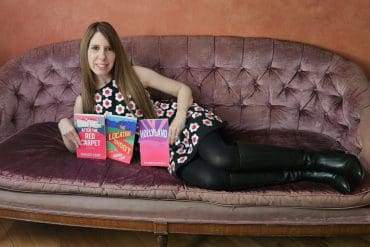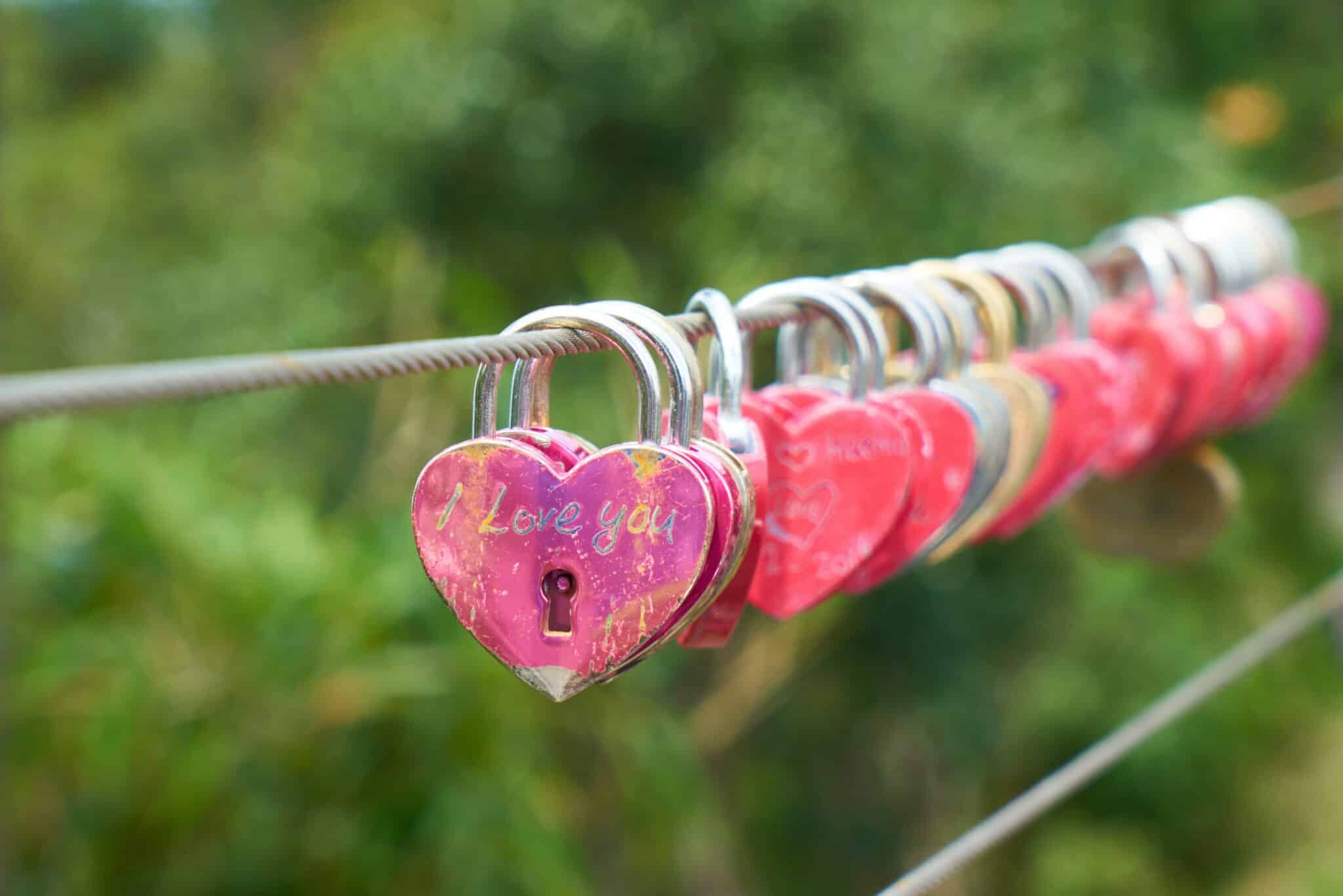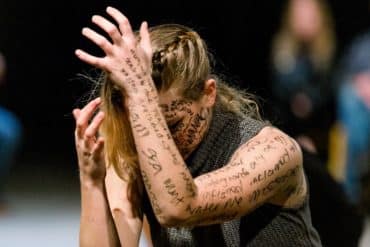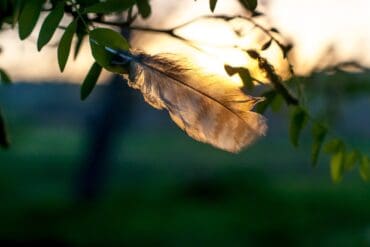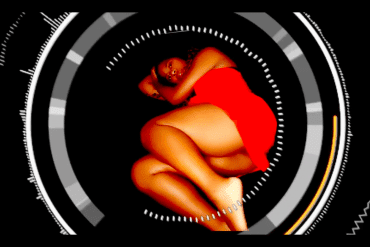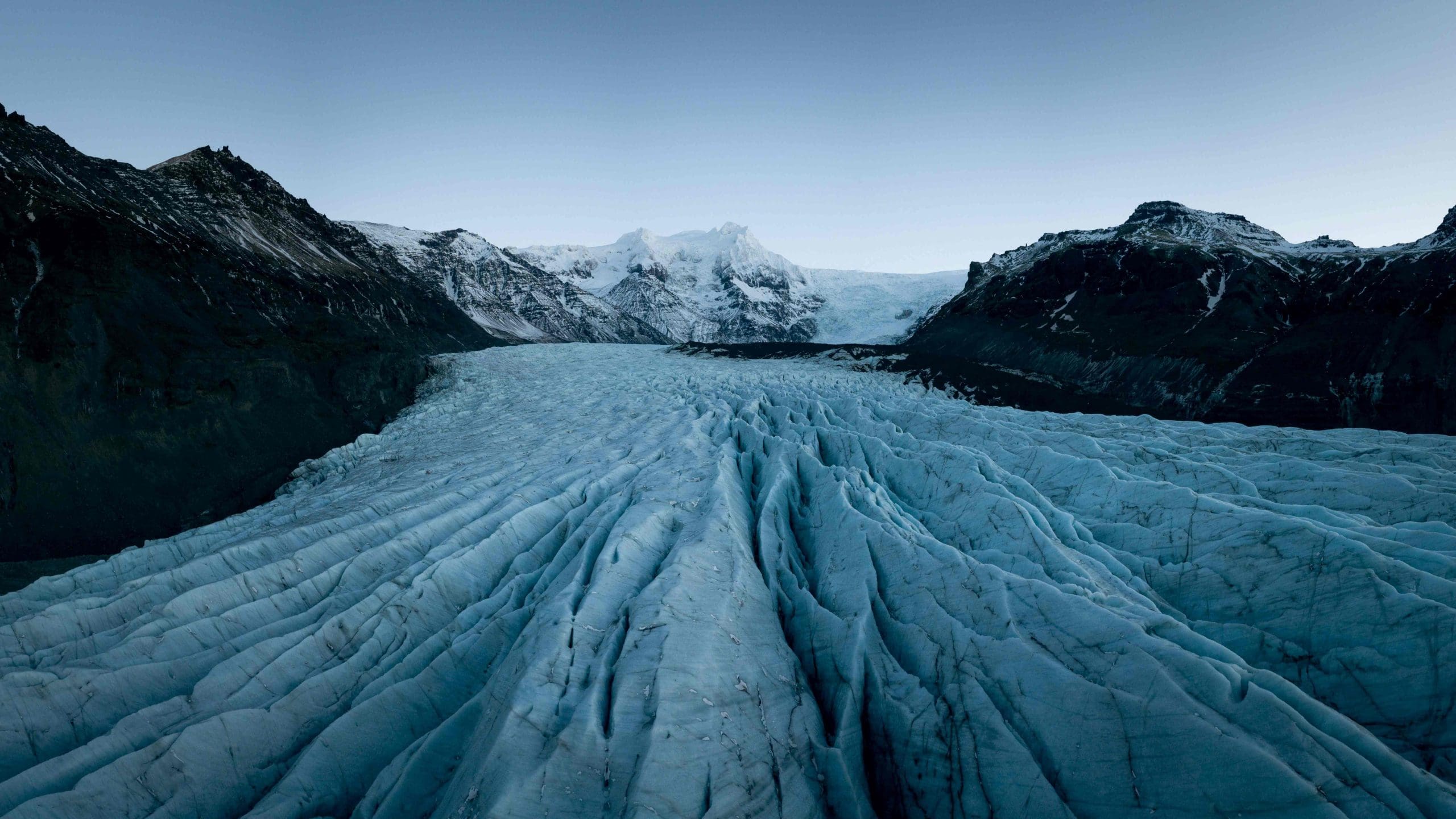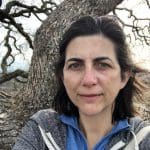The Crevasse: A Love Letter
Author’s Memo
I wrote “The Crevasse: A Love Letter” to help me grapple with confusing changes to the terrain of my life. A serendipitous encounter with social science research helped me locate my experience within a field of knowledge. This piece autoethnographically presents the somatic experience, relationships, thoughts, feelings, and research that were guideposts as I navigated personal change.
A new diagnosis changed the way I related to the world. The long-term relationship that had comforted my partner and me for years began to feel like clothing that no longer fit. We had to change to continue to grow, but the shape of the past doesn’t just disappear. It’s still visible, like the creases on origami that held a shape for a long time.
An academic approach to sexual fluidity helped me understand my experience as something that wasn’t just happening to me. I found comfort in this, and the ability to continue on the path of my life in a world where fissures and transition, personal and global, are the norm rather than the exception.
‘I wrote “The Crevasse: A Love Letter” to help me grapple with confusing changes to the terrain of my life.
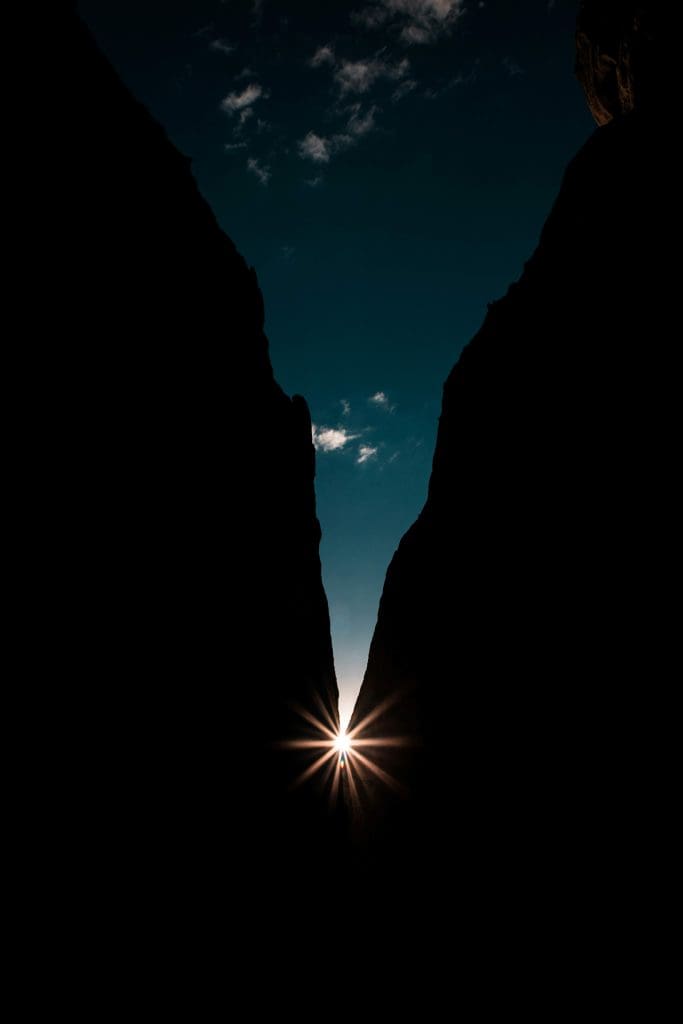
cre·vasse krəˈvas/
noun
- a deep open crack, especially one in a glacier.
synonyms: chasm, abyss, fissure, cleft, crack, split, breach, rift, hole, cavity
I’ve always been in love with words. For a big part of my life, I’d also been in love with Alison, who not coincidentally had an ongoing love affair of her own with language. She was mistress of fifty-cent words, the Queen’s English, which she wove seamlessly with Black English and sports jargon.
Alison wore facial piercings, combat boots, dreadlocks, and the jerseys of her favorite quarterbacks. She also slept with a teddy bear and played Dungeons and Dragons on the weekends. I was also a mix that surprised people – Arab, Irish, queer, femme, introverted, and at the same time outspoken. We fit together like people on the edge of the edge often do.
‘A serendipitous encounter with social science research helped me locate my experience within a field of knowledge.
We were both writers, so you can imagine our surprise when we heard a word neither of us had ever heard before while watching a nature program on public television. Alison’s brow wrinkled, my mouth dropped open, and we turned to face each other in wonder on the couch. The word: crevasse. Sure at first that the narrator was mispronouncing crevice, we ended up getting a big laugh out of the word, largely (at least on my part) because it contains the word ass, and some part of me is still 12 years old.
A year or so after seeing the program and falling into the word together, we were on a long-anticipated trip to Malta. Malta isn’t a big travel destination from the Pacific coast, but Alison had a fascination with island nations, and it seemed within reach. It was the fall of 2001, just after the attacks of 9/11. We had been together about seven years and it wasn’t our first big trip as a couple, so we traveled well together.
‘This piece autoethnographically presents the somatic experience, relationships, thoughts, feelings, and research that were guideposts as I navigated personal change.
The bus ride we were taking from Malta’s capitol Sliema to the shore was for some reason grueling, and we got off within what looked like walking distance to our destination. As we walked toward the horizon we came upon a deep, impassable canyon and knew immediately what we had found. It was a crevasse, and our plight — no bus for hours, an unwalkable distance to shore — became suddenly hilarious. We found a place to cool off while we waited for the next bus.
After that trip to Malta, Alison and I lived together in different places around San Francisco for a few years until she moved to Los Angeles to study. I moved to a smaller apartment to save money. She returned to San Francisco suddenly to deal with a health problem that come out of remission. I was happy to have her back, and though it was hard to share a smaller apartment, it was home.
I was depressed by the second Bush administration’s ongoing wars, which seemed to be creating and deepening crevasses the world would have a hard time escaping. Small tasks were often difficult. Unpacking was slow. I studied every object that I unpacked.
‘A new diagnosis changed the way I related to the world.
One object I came across was a small origami crane that my first love, Satchiko, had fashioned in the late 1980s out of a note I’d left her. I found the long-forgotten folded note inside a small basket that was shaped like a chicken. The chicken had lost its beak and tail. It contained some other random items besides the crane, like paper clips and safety pins, and was closed with a rubber band. A strange, battered container for a souvenir from another time.
I removed the little brown crane from the basket and unfolded it. I don’t know origami, so for this reason and many others, I knew I could never refold the note.
I noticed how to neat my handwriting had once been. On one side of the paper, I had informed Satchiko that my rent check to her would bounce. On the other side, I recognized Satchiko’s penciled note — the address of the local Women’s Health Center. The former crane shape had left its creases on the paper. One corner bent down conspicuously — that had been the head.
Once upon a time, the idea of Satchiko’s departure was a crevasse I feared. When we parted, I saved things for years. Not just the usual letters and photographs, but ragged T-shirts, bracelets made of string, and notes folded into symbols of peace. Seeing the note looking like a relic, I knew I’d made it through the abyss of our separation and could finally let go of the last traces of our love.
‘The long-term relationship that had comforted my partner and me for years began to feel like clothing that no longer fit.
I shredded the note and threw away the basket. I soldiered myself against outer wars and drew love around me — love of words, and love of Alison. Skimming National Geographic one day, I came across the word crevasse, cut it out, and taped it to Alison’s closet door, a playful reminder of journeys we’d taken together and the ways we could find humor in just about anything.
Alison crafted a brief career from the skills she had cultivated in Los Angeles, but love of words lured her back to school, and she finished a degree in English. I spent my time getting a different kind of education. I became very ill with symptoms of autoimmune disease. My doctors were baffled, and it took years to get a tentative diagnosis. Where medicine failed me, meditation took over. I became familiar with inner terrain, and feelings that I’d learned to deny became impossible to ignore. There were breaches that I couldn’t sit with. Fissures that I couldn’t stomach. Chasms that were making me someone I didn’t want to be. And flowers that wanted to bloom.
‘We had to change to continue to grow, but the shape of the past doesn’t just disappear. It’s still visible, like the creases on origami that held a shape for a long time.
Looking toward the horizon with Alison beside me, I thought for many years that I could see what was coming, but the word crevasse that we discovered together in the late 1990s might also have been a warning. Fifteen years after the start of our relationship, eight years after our trip to Malta, Alison and I parted ways. With very little acrimony and quite a bit of tenderness, we acknowledged our paths were no longer running parallel, and she moved out of the little apartment.
I shredded nothing. Years passed.
One of the flowers of awareness that had bloomed in my meditations was a rather unwelcome one: attraction to men. I’d dated women exclusively for over twenty years. I knew I was attracted to some men, but was pretty happy with serial monogamy with women. Coming out at nineteen as a lesbian was hard. Later I shifted to using the word Queer to accommodate my sense of being attracted across the gender spectrum, but I thought I had done my work on that front. I really didn’t want to deal with men.
‘I shredded nothing. Years passed.
It was almost embarrassing to come of age with hetero-style attraction in my early forties. When people asked me why I never dated men before, I simply told them that it was because women are hot and I’d been focused on them, but I really didn’t feel that flippant about it. I didn’t understand what I was going through. Serendipitously, psychologist Lisa Diamond published her research on sexual fluidity just as I was coming to terms with my shifting interests. I attended one of her lectures and was hugely relieved to find I wasn’t alone.
What is sexual fluidity? In an interview with New Scientist in July of 2015, Dr. Diamond said, “It means that people are born with a sexual orientation and also with a degree of sexual flexibility, and they appear to work together.” Women tend to be more sexually fluid than men, and fluidity can appear at any point in a person’s life. It’s not unusual for it to unfold at midlife.
At the age of 41, I thought I would try dating men. It didn’t go well at first. I fell quite hard for a man who was having nothing of it. “You freaked him out,” a friend told me. “Some people can’t handle being someone’s first.”
‘What is sexual fluidity?
Fortunately, not everyone has that problem. Nearly six feet tall, with hands almost twice the size of mine, and shoulders that can literally carry tons over the course of the day, Dan is the first man to cross my threshold. With New York on his tongue, he quotes the letters of Abraham Lincoln and screenplay speeches of the Hollywood warriors. Generous, unpretentious, and direct, when Dan loves a word, he commits it to memory.
Staying in the apartment Alison and I had shared, right as it was in so many ways, had me feeling like I was standing still while the world crumbled around me. Dan felt solid. He made staying in the apartment bearable. One day, as I stood hugging him in the kitchen, I looked over his shoulder toward what had once been Alison’s closet. There on the doorway was the word I had taped there years before: crevasse. A reminder. A warning. A memory. A love letter.
I walked toward it.
Credits
Featured Image by Cyrill Hanni for Unsplash
Image by Patrick Hendry for Unsplash
Learn More
New to autoethnography? Visit What Is Autoethnography? How Can I Learn More? to learn about autoethnographic writing and expressive arts. Interested in contributing? Then, view our editorial board’s What Do Editors Look for When Reviewing Evocative Autoethnographic Work?. Accordingly, check out our Submissions page. View Our Team in order to learn about our editorial board. Please see our Work with Us page to learn about volunteering at The AutoEthnographer. Visit Scholarships to learn about our annual student scholarship competition.
Mary Salome (she/her) is a queer Arab- and Irish-American writer and media activist who lives in San Francisco. Her prose and poetry have been published in Food for our Grandmothers: Writings by Arab-American and Arab-Canadian Feminists, Solstice: A Winter Anthology Vol 2, and Archive of the Odd.


